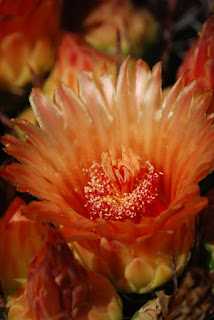Hope you enjoy the new photos. Lichen are cool, but maybe that is just me.
My last post on reptiles did not seem to raise many comments or screams. Kind of surprised me, but I will keep adding posts as my time allows. Feel free to leave comments or requests. Trust me when I tell you I have all kinds of images. That will only get worse when I hook up my scanner and start downloading some of the 50,000 slides I have. I might be the only one having fun with this, but at least someone is.
I like to nature walks wherever I go. Now some folks walk all aorund in nature and really never take in anything except the big picture. They walk by all the cool stuff around them. Stuff like lichen. There is even a webpage dedicated to it. I have been a fan for a very long time. It helps growing up in the desert areas where this stuff is. Of course it is all over in all kinds of areas.
For more informaiton go check out http://www.lichen.com/. It is now on my favorite list. (imagine that) And for all you teachers out there I know I use poor grammar. Thanks for noticing. http://www.lichen.net/ is a site with Grateful Dead music and other stuff for all the DeadHeads and Hippies out there.
A lichen looks like a single organism, but it is actually a symbiotic relationship between different organisms. It is composed of a fungal partner (mycobiont) and one or more photosynthetic partners (photobiont). The photosynthetic partner is generally green algae or cyanobacteria. There are about 13,500 species of lichen on the Earth.

It is debated whether the relationship in a lichen is mutualistic or part of a controlled parasitism. On one hand, the fungus and the photobiont seem to be in a mutualistic relationship because when they are combined, they have the ability to deal with ecological conditions that neither part would be able to handle on its own. It also seems that neither partner is damaged by the other. Upon taking a closer look at a lichen, some might say that the photobiont is a captive of the mycobiont, not a partner. The fungal partner "enslaves" the photobiont to feed from the photobionts photosynthesis. I could not have said it better myself, so I used this from http://www.nybg.org/bsci/lichens/lichen.html.
For all of you other folks that use poor grammar like me, you might undertand this better. Structurally, lichens are among the most bizarre of all forms of life. That's because every lichen species is actually composed of two, possibly even three, distinct species of organisms. One species is a kind of fungus. Usually the other species is an alga, but sometimes it can be a photosynthesizing bacterium known as a cyanobacterium. Sometimes all three organisms are found in one lichen.
Since all three kinds of organism are profoundly different from one another, what lichens do is almost like merging a shrub with a dog to produce something that looks and lives unlike either shrub or dog!
In this amazing association the fungus benefits from the algae because fungi, having no chlorophyll, can't photosynthesize their own food. A lichen's fungal part is thus "fed" by its photosynthesizing algal part. The algae benefit from the association because the fungus is better able to find, soak up, and retain water and nutrients than the algae. Also, the fungus gives the resulting lichen shape, and provides the reproductive structures. This kind of relationship between two or more organisms, where both organisms benefit, is known as mutualism.
http://www.backyardnature.net/lichens.htm

Since all three kinds of organism are profoundly different from one another, what lichens do is almost like merging a shrub with a dog to produce something that looks and lives unlike either shrub or dog!
In this amazing association the fungus benefits from the algae because fungi, having no chlorophyll, can't photosynthesize their own food. A lichen's fungal part is thus "fed" by its photosynthesizing algal part. The algae benefit from the association because the fungus is better able to find, soak up, and retain water and nutrients than the algae. Also, the fungus gives the resulting lichen shape, and provides the reproductive structures. This kind of relationship between two or more organisms, where both organisms benefit, is known as mutualism.
http://www.backyardnature.net/lichens.htm




















































